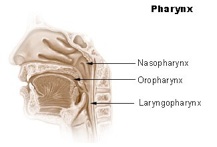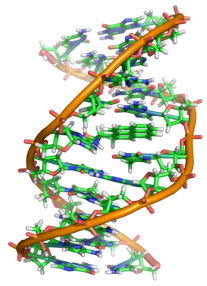The physiology of HRV and effects of mutations to its genome...


Physiology
When taking a closer look at the main physiological characteristics of any organism, it becomes apparent that survival and reproduction are two of the most prominent goals of an organism regardless of its complexity. For example, bacterial species hold important two common goals: finding a hospitable environment in which to live, and to reproduce as rapidly as possible.
In terms of viruses, survival and reproduction seem to go hand in hand. If a virus does not reproduce, there are no means by which it can pass along its genome. It should also be noted that the context of survival is not simply that of sustenance, but the ability to pass along its genome to surviving generations. This is due to the fact that viruses fall into the gray area between living and non-living.
Now it is time to explore the physiology of the Human rhinovirus. It will be examined in detail the process of viral reproduction beginning with the virus entering the cell, and ending ultimately with the dispersal of new viruses resulting in destruction of the host cell itself.
This process can be broken down into eight steps:
1)The proteins of the viral capsid bind to specific receptor sites of cells in the nasal passageway.
2)Once inside the cell, intracellular enzymes digest the capsid of the virus reducing it to a single strand of ribonucleic acid.
3)The viral genome (ssRNA) functions as a template for the synthesis of a complementary RNA strand by a viral enzyme.
4)The complementary RNA strands are then used to create new RNA strands, which will amount to the genome of the new virus.
5)The complementary RNA strand also plays the role of messenger RNA (mRNA), which codes for the synthesis of new proteins for the capsid of the new virus.
6)Intracellular vesicles act to transport the newly created proteins to the plasma membrane of the cell.
7)In the cell membrane, the capsid forms around the new RNA strands that were a result of step 4 in this process.
8)The newly created virus then buds from the cell membrane in which the newly created virus is then free to restart this process in another cell.
After comprehending this cycle, it becomes clear as to the complex functions that this organism is capable of. Human rhinovirus has the amazing capacity to enter a normally functioning cell, and transform it into a virus manufacturer! How incredible, yet pathologic this cycle is!!
The figure above shows a general viral replication process. Please note that this is not specific to HRV, but it will give a general understanding as to the replication process of a virus. Compare this figure with the text above specific to HRV to gain the best understanding as to the location of these specific processes.
In summary, the eight steps above describe the incredibly amazing process by which a cell is able to reproduce itself. Starting in a cell within the nasal passageway, a virus enters a cell and dissolves its outer layer to reveal its genome alone in the cell. This strand of RNA then makes a complementary copy of itself that it uses to do two different processes. First, the complementary RNA strand is used to make yet another copy of itself, resulting in the genome for a new virus. Second, the RNA strand tells the protein manufacturer of the cell to make proteins, which will make up the capsid of the new virus. After this, the two newly made parts of the virus come together in the outer cell membrane and a new virus is formed and exits the cell. This new virus is then free to repeat this process in an adjacent cell.

Mutations
While the ability for viruses to mutate and change is important, the process of how this happens will not be discussed in detail within this website. It is important, however, to recognize the outcomes of the ability for viruses to mutate and change. This is the underlying cause of the resistance to that we see not only among viruses, but other organisms as well.
In a nutshell, mutations in viruses occur when its genetic material is being replicated. Because this process is happening rapidly, errors that occur in its genome during replication can amount to a virus not being recognized by the host’s immune system. This is why it is possible for us to fall ill with a cold multiple times. Our immune systems develop a memory for each type of pathogen that it wards off. Since these genetic mutations are occurring, it is possible for a variation of the virus that the host just encountered to become pathogenic to the host as well.
HRV causes its pathology primarily in the upper respiratory tract. The nasopharynx in the picture above, is the primary region where HRV will reproduce and cause the symptoms associated with a cold.
A general representation of a DNA mutation. This is not an accurate representation of a mutation in the HRV genome.
An image of a virus (HIV) budding from a host immune cell, to complete its life cycle.





